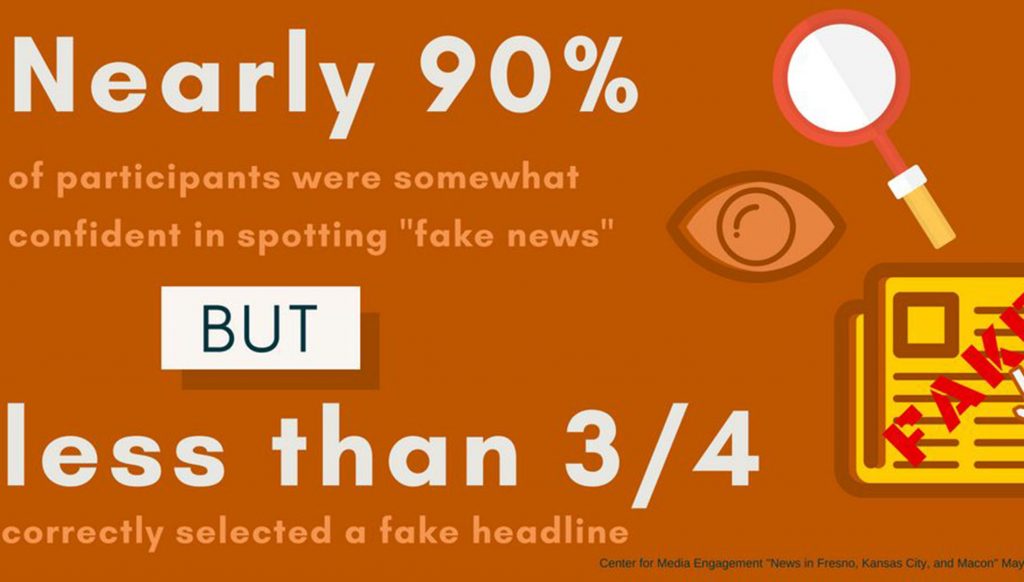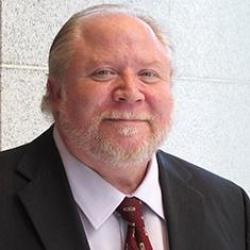A first look at our community surveys

Our community surveys provide insight about the public’s perception of local news organizations and their ability to differentiate fact from opinion.
This week we’re releasing the results from our first batch of community surveys, designed to help newsrooms understand what their communities know about, think about and want from the news.
Our McClatchy Co. newsroom partners in Macon, Kansas City and Fresno are looking at the results as they launch experiments in more open and engaged forms of journalism. In recent columns, Fresno Bee editor Joe Kieta wrote about the Bee’s commitment to deepening the transparency and engagement in their work and Midwest Region editor Mike Fannin described the importance of an open conversation between the Kansas City community and The Star. Macon Telegraph senior editor Jennifer Burk highlighted the gap between how residents rated themselves at spotting fake news and how well they did when tested and what the Telegraph is doing to help improve community news literacy.
The community surveys were conducted in collaboration with the Center for Media Engagement at the University of Texas at Austin. Researchers here at Arizona State looked at the questions, as did others at the American Press Institute, the Media Education Lab at the University of Rhode Island and those who commented after we released a draft of the survey questions.
The surveys were conducted online. We advertised them on Facebook, targeting people in Macon, Kansas City and Fresno who were interested in news. We included both those who had liked the local newspaper’s page as well as the “lookalike audience” of people who with similar interests who had not liked the page. In total, 4,584 people participated in the survey: 1,926 in Fresno; 1,557 in Kansas City and 1,101 in Macon.
Highlights from the full survey report:
— Local news is not “fake news.”
Our word association question produced the same results in our informal local surveys as it did in our national, scientifically weighted sample. A subset of nearly 1 in 5 Americans associate the word news with the word “fake,” but that insult was rarely, if ever levied on news at the local level.
In America today, the phrase “fake news” has two different meanings. To the nation’s leading politician, the president, the term refers to mainstream outlets that produce news he deems unfavorable. To the nation’s leading journalism stand-setter, the Associated Press, the term refers to deliberate falsehoods disguised as news, not from mainstream outlets.
Locally, people avoid those choices almost entirely, associating news with their specific region or outlet. While some survey-takers have specific complaints, particularly of bias, they mostly see local news in neutral terms. Further, a recent Poynter Media Trust Survey found that more than 70 percent of Americans have a “great deal” or “fair amount” of trust in their local news outlets. This “open mind” may give local outlets a competitive advantage when reinventing a more open, engaged forms of journalism.
— People aren’t strongly connected to local newsrooms.
Survey-takers gave local outlets average scores at best when it comes to credibility, transparency and engaging with the community. Participants rated their local news organizations an average of 3 or lower on a 5-point scale (where 5 is the most positive rating) on credibility, trustworthiness, balance, fairness, transparency and community engagement.
In all three communities, the most positive category was credibility and the most negative rating was for bias. Other research has shown connections between these categories. Increasing engagement has been shown to decrease perceptions of bias. Increasing transparency has been shown to increase trustworthiness.
The community disconnect with the local newsrooms was reflected in their news consumption and knowledge of big stories.
While survey takers said they consumed local news nearly every day, they said they consumed news produced by our newsroom partners only a little better than weekly. When asked how much they knew about a major local news story, the numbers were not good. In Fresno, 55 percent had not heard about local sex trafficking; in Macon, 50 percent knew nothing of major fraud allegations in Macon schools, and in Kansas City, 35 percent were unaware of the major controversy over expanding the Kansas City airport.
— People overestimate their news literacy skills.
Survey respondents think they are better at understanding news than they actually are. In all three communities, participants reported it was relatively easy to tell the difference between a news and opinion story.
But when they were tested in the survey, only slightly more than half of the participants could correctly identify a news story, compared to an opinion piece, analysis or sponsored content.
The survey presented this paragraph: “In a close vote, the state legislature approved the state budget yesterday with sweeping tax changes that affect nearly every taxpayer.” In Macon, 47 percent could not identify this as a news story. In Fresno, 42 percent could not. In Kansas City, 40 percent could not.
When asked to identify a piece of news analysis, more than 3 in 10 could not, and when asked to identify an opinion or an advertisement, in each case more than 1 in 10 could not.
Nearly 90 percent said they could spot a news hoax. But when tested the numbers fell dramatically. In Macon, 52 percent of the respondents wrongly thought a story about gang members targeting white women at a mall was true. In Fresno, 40 percent were fooled by a story saying the city was now the 10th largest in the U.S. In Kansas City, 27 percent believed a headline saying “New Study: Nearly Half the Nation’s Scientists Now Reject Evolution.”
— People admit needing help understanding news.
Despite their confidence (or overconfidence) in understanding news, significant numbers of people in each community said they could use help at least occasionally in “finding the information I need online.”
In Macon, 35 percent said they could use help; in Fresno, 37 percent; in Kansas City, 40 percent. Macon residents showed the lowest news literacy skills but were the least interested in help. Kansas City showed the strongest news literacy skills and at the same time was the most interested in help.
National studies (see the “eager and willing” section of this Pew survey) have indicated that some of the most highly engaged news consumers are among those most wanting to improve their skills. Other researchers, such as the American Press Institute, have shown that nationally nearly a third of Americans admit they can’t tell the difference between news and opinion.
All of this tells us — and the editors and staff members of our partner news organizations, as well as the libraries and universities in their communities — that a major opportunity exists for everyone: newsrooms, community partners, and the people themselves.
For us at the Co/Lab, the bottom line(s) look like this: People in the communities want more transparency and engagement from the newsrooms, and newsrooms are gearing up to do just that.
The result should be greater understanding all the way around, with news people better understanding what people need, and people better understanding how news works.
We’re particularly interested in the substantial numbers of people in the communities who say they need help finding credible news and information online. That’s good news for all of our education and library partners. From what we’ve seen, the more you know about news in the digital age, the more you realize you need to know.
Results from the community surveys, along with this “cookbook” of evidence-based best practices, form the foundation for our newsroom experiments.
The Fresno Bee, Kansas City Star and Macon Telegraph are serious about their commitment to listening to their communities and better serving their needs, including helping them better understand the mechanics of good journalism.
We hope more newsrooms will use this survey (or one of their own making) to find out where their community stands on news in general and their local newsroom in particular.

Eric Newton is a global leader in the digital transformation of news and a key figure in the creation of news literacy. As the Innovation Chief, he drives change and experimentation at Cronkite News, the news division for Arizona PBS.
